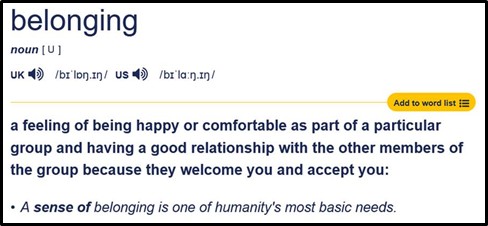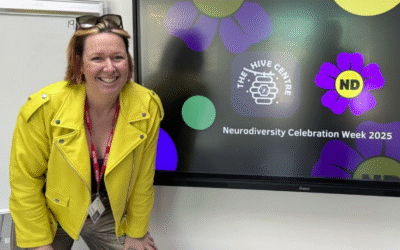Guest blog by Bonamy Waddell, Founder, Bon Insight Ltd
Belonging.
You don’t need a dictionary definition. It’s almost like cosy, or smooth. They just do what they say. But whilst the word might be simple in its definition, it’s not so easy in its implementation. We’re talking here about workplace belonging
But what actually is it?
Maybe a definition IS what we need to set the scene. To quote the Cambridge Dictionary, belonging is:

When diverse voices are missing from the room, blind spots go unchecked. And in today’s fast-moving digital world, mistakes like these are called out quickly, often with lasting impact.
But what’s the business case?
That’s simple. The Great Place to Work research has tied it to various ‘wins’, including that employees experiencing belonging are “5 times more likely to want to stay at their company a long time”. That’s not only a financial win by saving on recruitment costs, it’s a productivity win, a succession planning win, to name just a few. But more importantly, it’s the employee ‘win’ – just being where you belong.
The same research also revealed that employees are “3 times more likely to look forward to coming to work”. Just sit with that for a minute. Would anyone want their employees to NOT look forward to coming into work? Imagine your partner, your friend, your child, your parent. No-one should spend so much of their working life not looking forward to it.
Whilst we shouldn’t need data and stats to grasp the need to embed a culture of belonging, in case you’re still not convinced, a Gallup study showed that belonging increases engagement, and “highly engaged workplaces delivered an 18% increase in sales”.
So how do you ‘instil’ belonging?
Let’s start with people managers. They build trust in their teams, they listen as well as share advice, they support. Or so we hope. A recent post from Change and Transformation coach Maria Jonsson, from Good Monday, reminded us all of the importance of being “aware of the HIPPO effect – where HIPPO stands for the Highest Paid Person’s Opinion – taking the opinions and views of the most senior person in the room, regardless of whether this is the best option”. In this case, the culture of belonging has been surpassed by a manager’s belief that their seniority equals their ‘rightness’.
Transparency is key. Clear communications to all, rather than siloed ‘need to know’ channels, promote a sense of inclusion. It shows that all employees are trusted and valued.
Gathering data is crucial. Have you asked your employees where improvements might be made? Or used insights to celebrate how well you’re doing? Whilst a survey is only a ‘moment in time’, isn’t it better than not asking at all?

This list isn’t finite. Just like people, organisations are different too, and finding the ‘right’ way to build a culture of belonging isn’t a ‘one size fits all’. We’re here to support you in finding the way that works best for your teams.
So if you feel you’re on the way, but haven’t quite got there, or perhaps you have ‘measured’ your employees’ sense of belonging recently, why not get in touch? Edge of Difference can help you build workplaces where everyone belongs.




